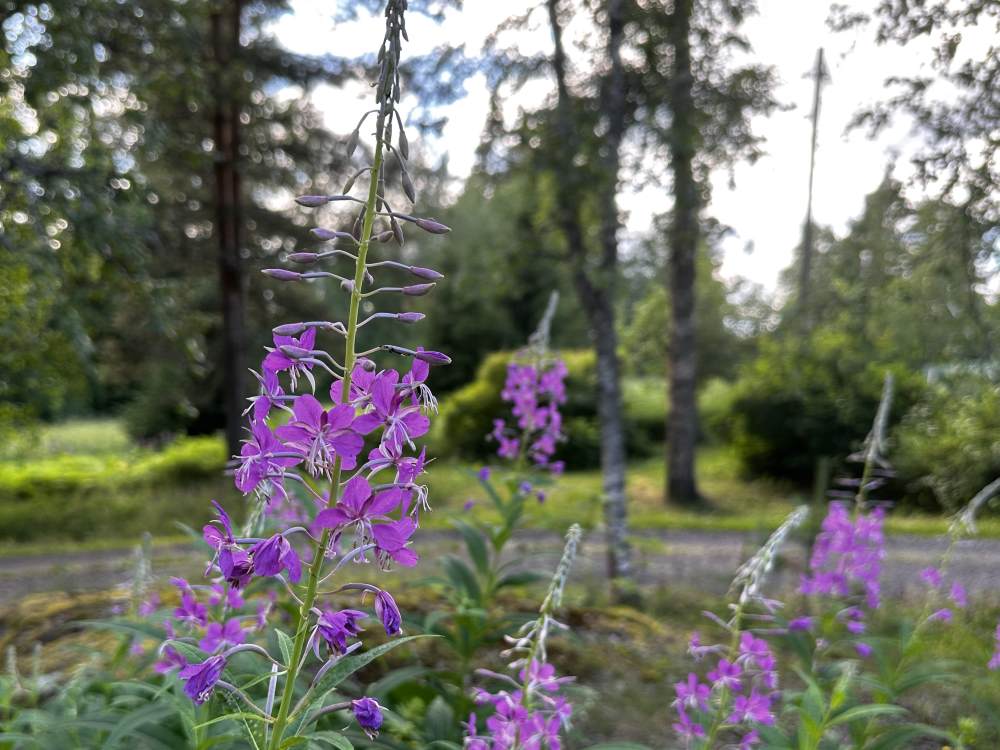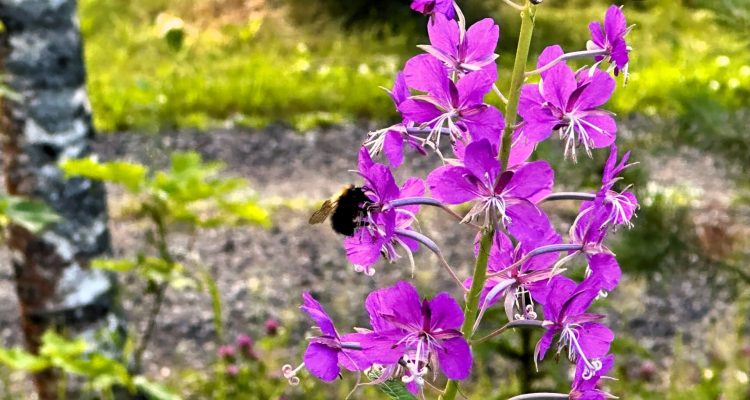Have you ever considered why fireweed is better than large-leaved lupine in Finland? Large-leaved lupine (Lupinus polyphyllus), komealupiini in Finnish, is a strikingly beautiful North American plant that has earned a bad reputation in Finland. Despite its vibrant, eye-catching flowers, this non-native species is said to pose a threat to the country’s native flora. Why is that? In contrast, fireweed (Epilobium angustifolium), a native and actually edible flower, offers a perfect example of how local plants can support and enhance the ecosystem. In this blog post, we dive into these two plants and why fireweed is better than large-leaved lupine.
I recently took part in course identifying invasive species in Finland. In the course, we learned about the problems invasive species cause in nature and were taught how to identify, prevent, and properly eradicate the most common invasive species. It inspired me to write about the topic, even though I’m not a plant or flower expert by any means.
The beauty and the beast: Large-leaved lupine
Large-leaved lupine, with its tall spikes of blue, purple, pink, or white flowers, can be a stunning addition to gardens and roadsides. In Finland, it’s commonly seen along roadsides, in meadows, and even in protected natural areas. The problem with large-leaved lupine lies in its ability to dominate the landscape.

The large-leaved lupine’s dense growth pattern shades out smaller native plants, reducing biodiversity. Its aggressive growth and seed production allow it to spread rapidly, outcompeting native plants. In Finland, it must not be imported into the country, sold, or purchased, and the landowner must remove it from their area, including private yards. As a vigorous nitrogen-fixing plant, lupine enriches the habitat and alters the local plant species composition.
It’s easy to understand why it is considered invasive species. The course that I participated, was actually organized as an effort to control the lupine’s spread by creating public awareness about the plant’s invasive nature and what we can together prevent it invading even more areas.

Fireweed is a native plant with benefits
In stark contrast to the invasive large-leaved lupine, similar looking fireweed (Epilobium angustifolium), known in Finnish as maitohorsma, is a native plant celebrated for its ecological and medicinal benefits. The Finnish Martha Association provides two explanations for the name “maitohorsma”, loosely translated as milkweed. According to some, the name refers to the fact that when the fireweed is cut, a white liquid is secreted from the stem. On the other hand, it is said that the name comes from the belief that the plant increases milk production in cows.

Fireweed is a pioneer species that quickly colonizes disturbed areas such as after forest fires or logging activities, thus probably its English name fireweed. Its presence helps stabilize soil and paves the way for the return of other native plants. Fireweed’s nectar-rich flowers are a crucial food source for bees and other pollinators.
Fireweed also has a long history of use in traditional medicine. It is known for its anti-inflammatory and soothing properties, often used to treat gastrointestinal and skin conditions. According to the Martha Association, the young shoots and leaves are also edible and can be used in salads or as a cooked vegetable, offering nutritional benefits.
Conclusion of the comparison of large-leaved lupine and fireweed
While the large-leaved lupine’s vibrant blooms may appeal to the eye, their invasive nature and harmful impact on native ecosystems in Finland cannot be overlooked. Embracing and protecting native plants like fireweed while managing invasive species like the large-leaved lupine is crucial for maintaining the health and balance of Finland’s natural landscapes. In Southern Finland, lupines have just bloomed, but in many areas, they are still in full bloom. Now is the perfect time to go cut and collect them in your flower vase!
I was driving along Häme Ox Road the other day and saw an elderly man by the roadside with a scythe. Luckily a lupine mower came to my mind before the Grim Reaper. The man was, in fact, cutting lupines in front of his house. I guess I wouldn’t be telling you this if it was the other guy.

